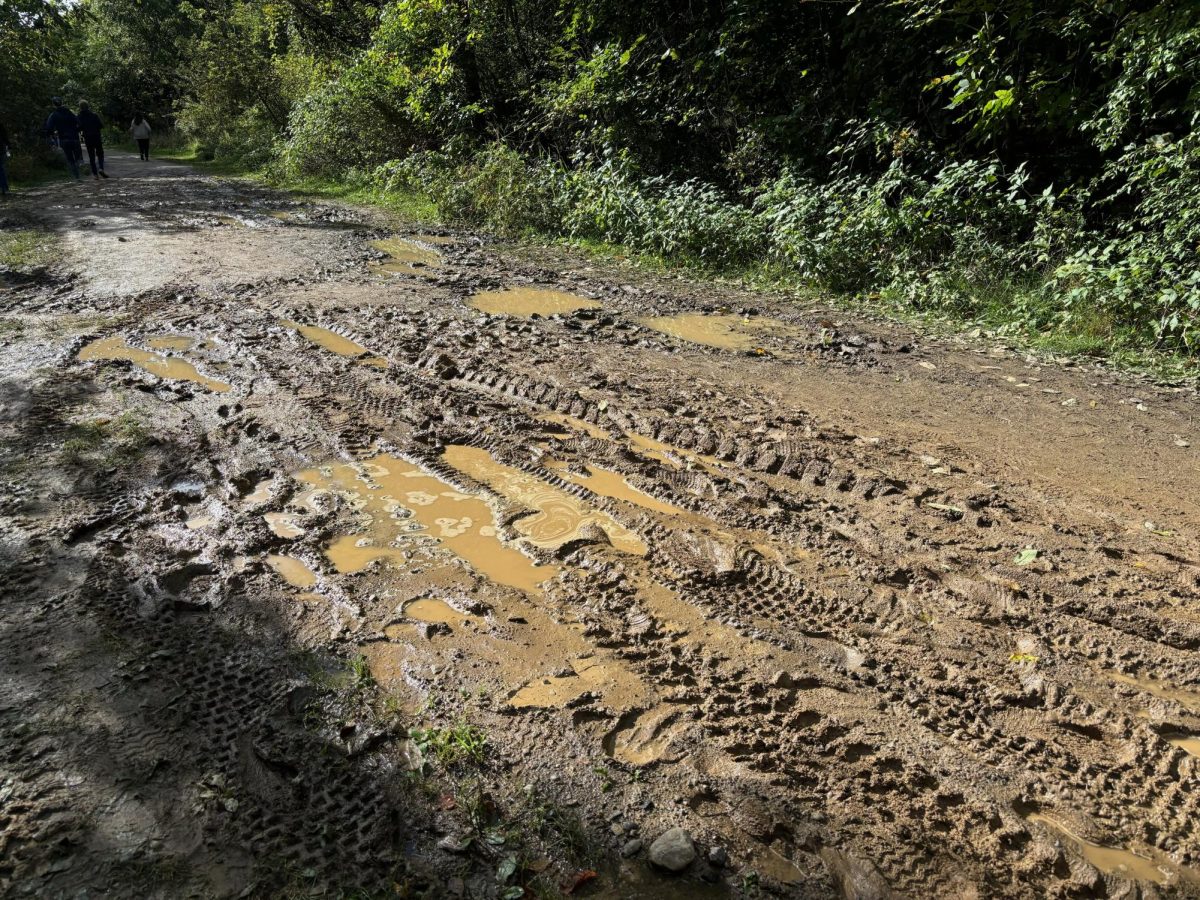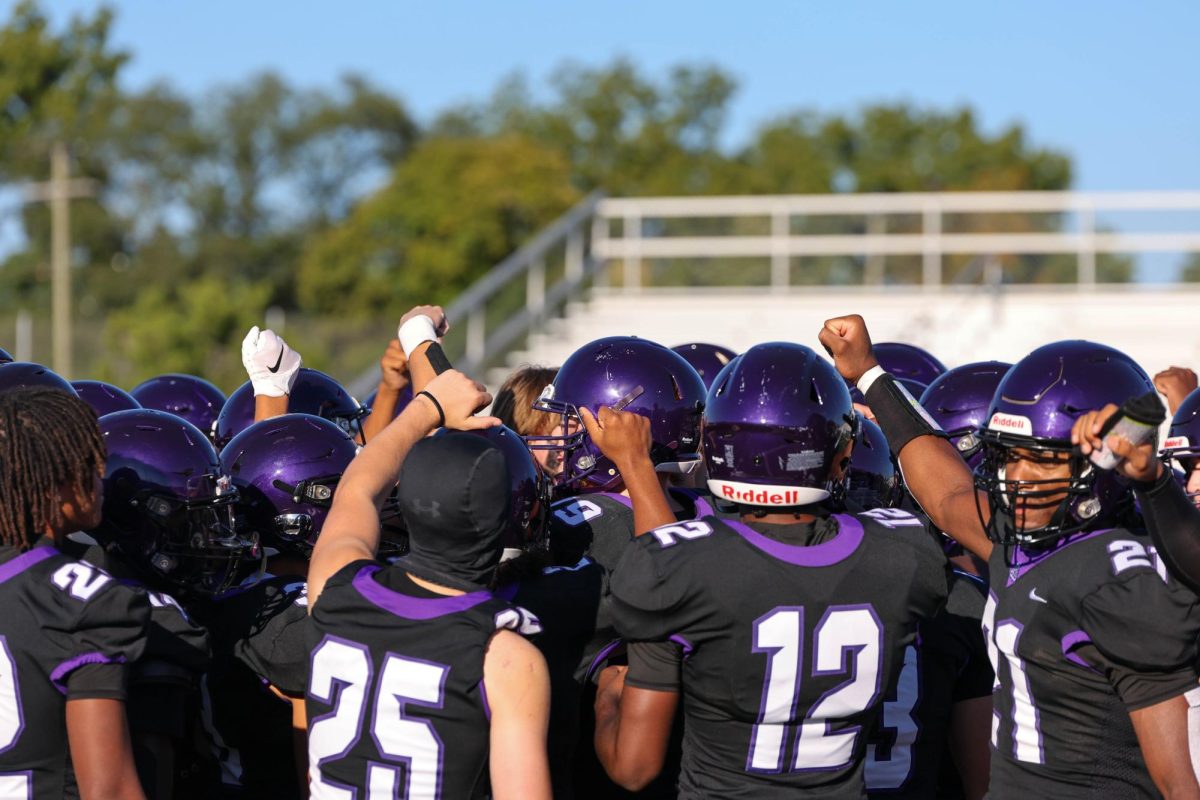Heel, toe, heel, toe. Feet pounding on pavement for hours. A mass of people winding through the streets of Detroit, Boston, Chicago. Over a bridge, along the river, through a tunnel. People are wheezing. After ten miles their clothes rub against their bodies, peeling off bits of skin and leaving the area raw. Toenails nestled in worn out sneakers are black from weeks of training. Everyone has a common goal – to get to the finish line.
They are running twenty-six miles, a marathon, an unnatural feat that with the right training anyone can do, says Robbie Stapleton, a physical education and health teacher.
“Physiologically, we are built to run,” Stapleton explained. “Your body will do anything you want it to, if you treat it with respect.”
Stapleton is right. A recent study by University of Utah professors Dennis Bramble and Harvard paleoanthropologist Daniel Lieberman shows that our numerous sweat glands, tendons and large glutei maximi function mainly during running. They claim that if we were not built to run, these inner systems would have been weeded out years ago by natural selection.
If running is supposed to be inherently natural, then why is it so hard for some?
According to the U.S Department of Health and Human Services, the lower limbs bear 2-3 times the person’s body weight when running. The body was built to run, not to be infallible. Therefore runners often develop stress fractures, shin splints and joint trouble.
Despite all of this, though, running still has its physical and mental benefits.
Jacob Lachance, a Community High school Senior who ran the Detroit Marathon last October, used the experience as a chance to show himself that he could complete a goal. “I sort of proved to myself that I can do something if I plan for it, try it.” Lachance explained.
Marci Tuzinsky, the lead teacher at CHS, ran a marathon for a completely different reason. Tuzinksky’s good friend, fellow teacher Anne Thomas, has lost her daughter to leukemia. In a show of support, Tuzinsky chose to run for Team in Training, a marathon group that raises money for the Leukemia and Lymphoma society. “ The time was right. I wanted to do it and I did it.” Tuzinsky explains, “ You endure the pain. Whatever I am feeling is nothing compared to what these kids have done.”
Tuzinsky turns around, lifting the bottom of her shirt. At the base of her spine there are a bunch of little scars. She called it chaffing. It occurs when running clothes rub against the skin, effectively creating an open wound. “You don’t feel it when your running,” Tuzinsky said, “but afterwards when your taking a shower, it hurts.” She went on to explain how, after running for such long distances and so often, some runners toenails fall off and turn black.
Why go through all of this just to complete a goal?
First off, it takes a certain person. According to Stapleton, a marathon runner is characteristically high-powered, goal-oriented and well off. To run 26.2 miles is a big commitment — it takes a lot of time and effort. Not everyone is up for the challenge, but Stapleton clarifies that “you don’t need to run a marathon to be healthy.” However, she adds that “a lot of people need a goal to stay motivated,” and a marathon certainly helps.
Any kind of exercise leaves the body better than the day before.
Although each workout feels different, some are low intensity while others force people to feel the burn. So what does a marathon feel like?
In Lachance’s experience, “It was boring and exciting at the same time.” Not listening to any music, the crowds helped spur him on. “Around the sixth mile there was a guy with a mega phone,” Lachance remembers. “He was in the crowd and he looked right at me and said, ‘Now that guy looks happy!’”
Short interactions like that one propel the runners forward and over the fated wall. The wall is where the body has used up all of its glycogen and has to start using fat as a fuel. Side effects of this for inexperienced and ill-trained runners include heavy cramps.
Like the majority of marathon runners, Tuzinsky hit the wall at mile twenty-two. She had miscalculated. Under the impression that she had only four miles to go, Tuzinsky coasted until she saw the marker for 22, realizing that she actually had six. “It was completely mental,” Tuzinksky explained. “I thought I was close to the end. Those last miles were like hell. I was afraid that if I stopped [for water] I couldn’t start running again.” Like Lachance, an onlooker cheered her on, giving her the extra push to continue and finish.
The only aspects of the marathon that are constant are the name and distance. The marathon is named after the Greek town of Marathon, where Pheidippides, a messenger, ran from non-stop to Athens in order to announce the verdict of a battle. The distance that he ran is disputed, but in 1921 a final distance of twenty-six point two miles was determined by the Olympic committee.
Hundreds of marathons are run each year by thousands of people. Each person has their own reason, their own experience and their own reaction but in the end it is indisputable that each person completes an enormous and impressive task.










